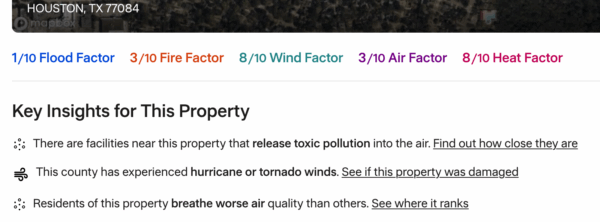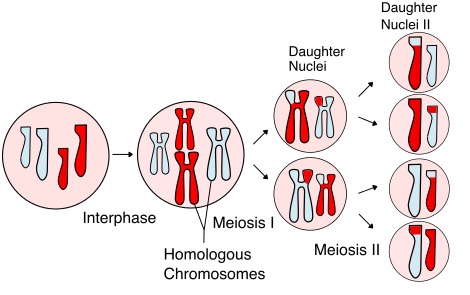Thanks, Ken. I asked chatGPT to review your review. The following is from chatGPT, with a comment from me in parentheses about formatting a table…
Full text of the comment (for reference):
Martín…I can criticize what you thought about the report…
“…which I think is discrediting the science that shows that global warming is real, that it is caused almost entirely by the burning of fossil fuels, and that the consequences will be bad for the human race.”
No serious person needs additional proof that the climate has warmed again since about 1975. And no one will deny that the activities of eight billion people have benefited from burning carbon to improve their living standards. The statistical correlation between Mauna Loa’s CO2 and the world’s population has been almost perfect. But claiming that the consequences will be bad for these billions of people is almost entirely the result of forecasting models that have trouble incorporating natural variability when predicting the past in all but the most general ways. Models that tend to ignore or dismiss that very high levels of atmospheric CO2 in the geological past were beneficial to life at that time. Even when the pH of the oceans was becoming less alkaline because of it.
The real problem remains: What SHOULD humanity REALISTICLY do, given that natural variability could again alter the direction of a changing climate as has happened in the past?
⸻
Section by section analysis
⸻
✅ Valid or Reasonable Observations
1. Recognition of recent warming
“No serious person needs additional evidence that the climate has warmed again since about 1975.”
• ✅ Valid. This is consistent with the instrumental temperature record (NASA, NOAA, HadCRUT, etc.), which shows rapid warming since ~1975.
• However, this statement does not recognize attribution (the causes of warming), which is a central point of controversy.
2. Increase in CO₂ correlates with population/industrialization
“The statistical correlation between Mauna Loa’s CO2 and the world’s population has been almost perfect.”
• ✅ Approximately exact. CO₂ emissions have increased along with population growth and the use of fossil fuels. However, while the correlation is real, the causality is well established: the increase in CO₂ is chemically and isotopically attributable to fossil fuels, not simply population.
⸻
⚠️ Questionable or misleading claims
3. Mischaracterization of the models and their limitations
“…the consequences will be bad…it is almost entirely the result of forecasting models that have trouble incorporating natural variability when predicting the past…”
• ❌ Misleading. Climate models take into account natural variability (solar, volcanic, ENSO) and have done a reasonable job predicting temperature trends, especially when both natural and anthropogenic forcings are included.
• The issue of the model’s abilities is exaggerated here. In fact, multiple studies (e.g., Hausfather et al. 2020) show that climate models from the 1970s onward have predicted warming rates quite accurately.
• It is important to highlight that the negative consequences are not only inferred from the models but also from the observed trends: increase in heat waves, rise in sea level, retreat of glaciers, ocean acidification, loss of biodiversity, etc.
4. Argument “the high level of CO₂ in the past was beneficial”
“…very high levels of atmospheric CO₂ in the geological past were beneficial to life at that time…”
• ⚠️ Partially true but very misleading. Yes, CO₂ was higher during some geological periods (for example, the Carboniferous or Cretaceous) and life existed, but:
• These periods lasted tens of millions of years, giving life time to adapt through evolution.
• Sea levels were very different. Coral reefs and many coastal ecosystems would not have survived that transition on modern time scales.
• Current human civilization is adapted to a stable Holocene climate; Even relatively small changes in temperature, precipitation or sea level cause massive disturbances.
• Additionally, past warm periods (e.g., PETM ~55 Ma) are associated with mass extinctions, oceanic anoxia, and ecological disruptions. It is misleading to imply that “high CO₂ = net benefit for life.”
5. Ocean acidification is minimized
“Even when the pH of the oceans was becoming less alkaline because of it.”
• ⚠️ Minimization. Ocean acidification is well documented and decreasing pH has real impacts on calcifying organisms (e.g., corals and shellfish). This is not just an abstract chemical change: it affects ecosystem services and food webs.
⸻
❌ Logical fallacies or weak reasoning
6. Natural variability could reverse climate change
“…natural variability could again alter the direction of a changing climate as has happened in the past.”
• ❌ Unfounded implication. Natural variability is superimposed on long-term trends. It may cause temporary decelerations or accelerations, but:
• There is no known natural mechanism currently in operation that can reverse the long-term anthropogenic warming trend.
• Internal variability (e.g. ENSO) can change patterns temporarily, but dominates the net GHG radiative forcing.
• The idea that natural variability could reverse the warming trend without a corresponding decrease in GHGs has no physical basis.
• This is often used rhetorically to delay action, although the risk of delay is that mitigation becomes more difficult and costly.
⸻
Philosophical framework and rhetoric
7. “Realistic action” versus “idealism” framing
“What SHOULD humanity REALLY do…”
• ⚠️ This is a classic rhetorical move: shifting the debate from “Is it real?” to “What can we realistically do?”, which is a fair question, but risks normalizing inaction if the challenges are framed as too difficult.
• The answer to “What should we realistically do?” It depends on social values:
• Minimize long-term risk?
• Maximize economic growth?
• Protect the vulnerable?
• But invoking realism without quantifying the risk or acknowledging the increasing harm is often a way to evade responsibility.
⸻
Peer review summary (supposed to be a table, but cannot be copied and pasted correctly)
Category
Assessment
Scientific precision
Mixed. It accurately recognizes recent trends in warming and CO₂, but misrepresents models, downplays ocean acidification, and oversimplifies the relevance of ancient climates.
Use of evidence
Selective and anecdotal. Avoid conventional consensus literature and ignore observed impacts that are already occurring.
Internal logic
Weak. It asserts uncertainty and natural variability without quantifying probability or scale, and implies policy paralysis.
Rhetorical tactics
Use a “reasonable voice” to deflect criticism while promoting doubt. It frames action as unrealistic without evaluating the cost of inaction.
Policy relevance
It avoids explicit policy recommendations, but implicitly advocates a delay or minimal response.
Final thoughts
This response is emblematic of “lukewarm” rhetoric, a style of argument that acknowledges the basics (yes, warming is happening; yes, humans are contributing), but:
• emphasizes uncertainty disproportionately;
• loosely invokes natural cycles;
• appeals to “realism” to stop or soften the action;
• uses geological history out of context to minimize current risk.
While civil and superficially reasonable, it obscures the true state of climate knowledge and misleads readers about the scope, urgency, and attribution of climate impacts. If used as a basis for political decisions, it would likely encourage inaction at a time when action is needed.
#RealClimate #DOE #CWG #Report #Debatable










